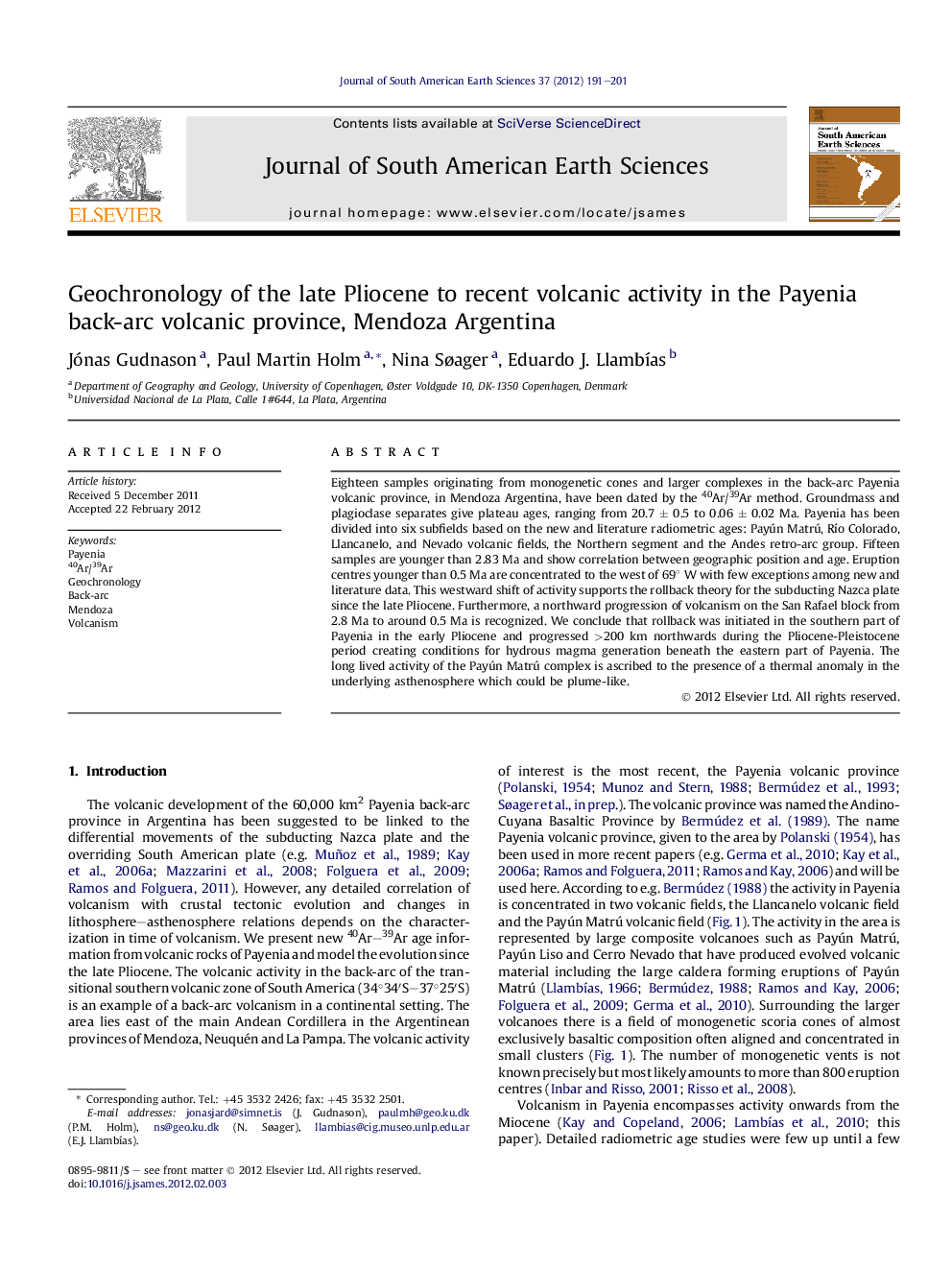| Article ID | Journal | Published Year | Pages | File Type |
|---|---|---|---|---|
| 4682549 | Journal of South American Earth Sciences | 2012 | 11 Pages |
Eighteen samples originating from monogenetic cones and larger complexes in the back-arc Payenia volcanic province, in Mendoza Argentina, have been dated by the 40Ar/39Ar method. Groundmass and plagioclase separates give plateau ages, ranging from 20.7 ± 0.5 to 0.06 ± 0.02 Ma. Payenia has been divided into six subfields based on the new and literature radiometric ages: Payún Matrú, Río Colorado, Llancanelo, and Nevado volcanic fields, the Northern segment and the Andes retro-arc group. Fifteen samples are younger than 2.83 Ma and show correlation between geographic position and age. Eruption centres younger than 0.5 Ma are concentrated to the west of 69° W with few exceptions among new and literature data. This westward shift of activity supports the rollback theory for the subducting Nazca plate since the late Pliocene. Furthermore, a northward progression of volcanism on the San Rafael block from 2.8 Ma to around 0.5 Ma is recognized. We conclude that rollback was initiated in the southern part of Payenia in the early Pliocene and progressed >200 km northwards during the Pliocene-Pleistocene period creating conditions for hydrous magma generation beneath the eastern part of Payenia. The long lived activity of the Payún Matrú complex is ascribed to the presence of a thermal anomaly in the underlying asthenosphere which could be plume-like.
► Eighteen new 40Ar/39Ar ages from Payenia. ► Subdivision of Payenia into six volcanic groups. ► Northward propagation of volcanism from the early Pliocene. ► Propagation of volcanism towards the Andes since late Pliocene. ► Concentration of volcanism east of 69° W over the last 0.5 Ma.
